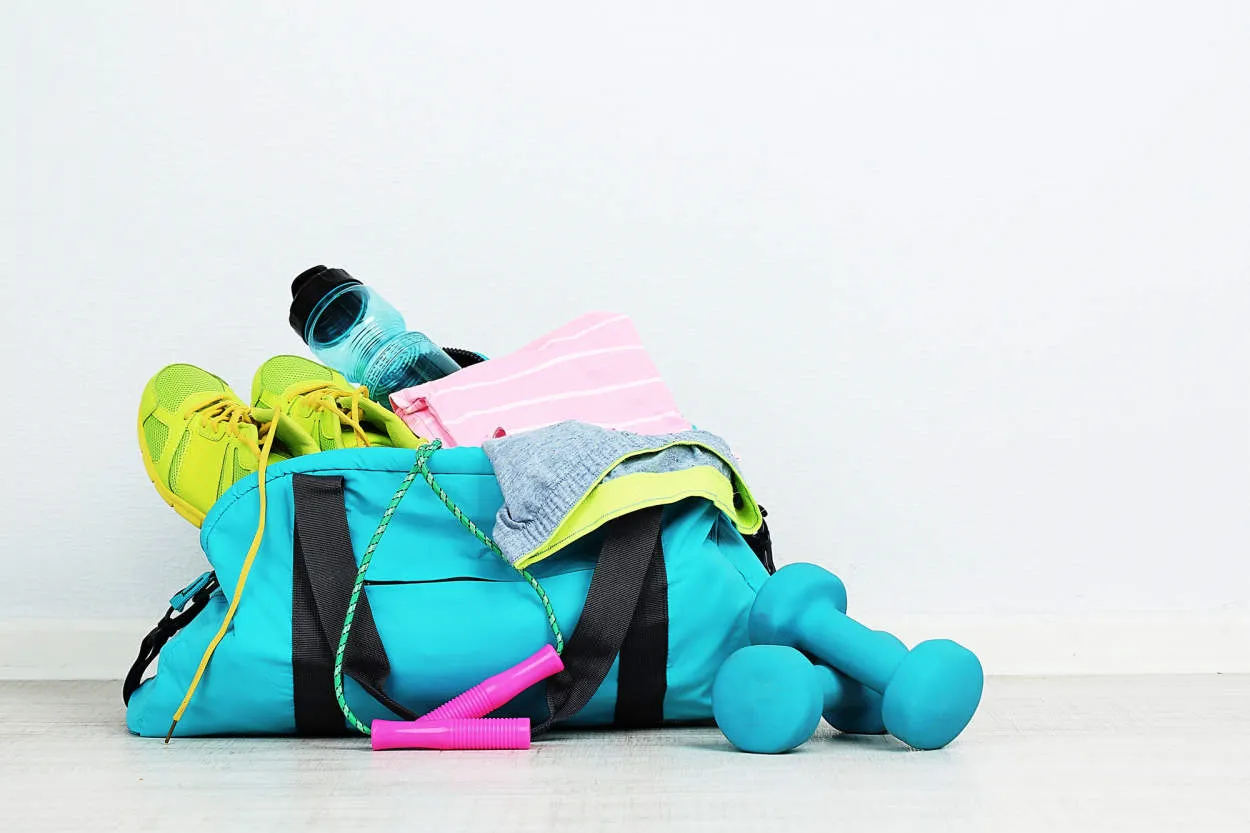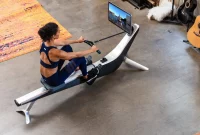The Athlete’s Toolbox: Essential Sports Equipment
Must-Have Gear for Different Sports
When it comes to pursuing your favorite sport, having the right gear is essential. Whether you’re a complete beginner or a seasoned athlete, having the proper equipment can enhance your performance and keep you safe. Here are some must-have items for various sports:
1. Running
For runners, investing in a good pair of running shoes is crucial. Look for shoes that provide proper cushioning, support, and fit your feet well. Additionally, consider getting moisture-wicking clothing to keep you comfortable during long runs and a reliable sports watch to track your progress and optimize your training.
2. Basketball
Basketball players should prioritize quality basketball shoes that offer ankle support and traction to prevent injuries. Don’t forget about a durable basketball and a comfortable jersey to enhance your gameplay. A sports bag to carry your gear is also handy.
3. Tennis
Tennis enthusiasts will benefit from a comfortable pair of tennis shoes designed for swift movements on the court. A reliable tennis racket that suits your playing style is a must. Additionally, tennis players should have a few extra tennis balls, a sweatband, and a cap to protect from the sun.
4. Swimming
For swimmers, a well-fitting swimsuit or swim trunks made of durable materials are essential. Goggles that provide a watertight seal and a clear view are crucial. A swim cap, a towel, and waterproof sunscreen are also necessary to complete your swimming gear.
5. Cycling
Cyclists should invest in a comfortable helmet to prioritize safety. A reliable bike, whether road or mountain, is essential. Don’t forget to have cycling shorts with good padding to enhance comfort during long rides. A cycling jersey, gloves, and sunglasses can also improve your cycling experience.
6. Soccer/Football
Soccer players should have good-quality soccer cleats that provide stability and traction on the field. Additionally, shin guards and comfortable socks are necessary for protection and comfort. Lastly, don’t forget a soccer ball suitable for your playing needs.
Remember that these are just some examples of sports and their essential gear. Different sports may have additional requirements. It’s important to research and consult with professionals or experienced athletes to ensure you have the appropriate equipment for your chosen sport. So, gear up, stay motivated, and enjoy your journey as an athlete!
Innovations in Safety Equipment
In the world of sports, safety plays a crucial role in ensuring that athletes can perform at their best without risking serious injuries. Over the years, there have been numerous innovations in safety equipment that have revolutionized the way athletes protect themselves. These advancements not only provide better protection, but also enhance comfort and performance.
1. Impact-Reducing Helmets
The most important piece of safety equipment for many athletes is the helmet. Innovations in helmet technology have resulted in impact-reducing designs that greatly reduce the risk of head injuries. Features like energy-absorbing materials and adjustable fits ensure that athletes can focus on their performance without compromising safety.
2. Protective Gear with Built-in Technology
Modern safety equipment incorporates cutting-edge technology to enhance protection and performance. For instance, certain types of padding now come with built-in sensors that can measure impact forces and provide real-time feedback to athletes and their coaches. This allows for better monitoring and prevention of injuries.
3. Smart Clothing
Smart clothing has emerged as a game-changer in the realm of safety equipment. These garments are embedded with sensors that can track vital signs, body temperature, and hydration levels. By providing instant alerts or notifications, smart clothing helps athletes optimize their performance while minimizing the risk of heat-related conditions or exhaustion.
4. Advanced Footwear
Shoes play a critical role in preventing lower body injuries. The latest advancements in footwear technology focus on improving stability, reducing impact forces, and enhancing overall performance. Features such as shock-absorbing soles, ankle support, and lightweight materials allow athletes to stay agile and protect their feet from potential injuries.
5. Protective Eyewear
Eye injuries are common in certain sports, which makes protective eyewear a necessity for athletes. Recent innovations in this area include shatterproof lenses, customizable fits, and anti-fog coatings, ensuring clear vision and maximum protection during intense physical activities.
These are just a few examples of the many innovations in safety equipment that have revolutionized the sports industry. As technology continues to advance, we can expect further improvements in athlete safety, ultimately allowing individuals to push their limits with confidence and peace of mind.
The Role of Equipment in Enhancing Skills
The Athlete’s Toolbox: Essential Sports Equipment
Sporting equipment plays a crucial role in enhancing an athlete’s skills and overall performance. With the right equipment, athletes can maximize their potential and achieve success in their respective sports. This article explores the significance and impact of having the essential sports equipment in an athlete’s toolbox.
1. Safety and Protection
One of the primary purposes of sports equipment is to ensure the safety and protection of the athlete. Helmets, padding, mouthguards, and other protective gear are vital in reducing the risk of injuries during training and competitions. By minimizing the chances of physical harm, athletes can focus on improving their skills with peace of mind.
2. Performance Enhancement
The right equipment can significantly contribute to an athlete’s performance enhancement. Appropriate footwear with good traction, for instance, can improve speed, agility, and stability. Well-designed racquets, clubs, or sticks enable athletes to showcase their technique and maximize their power. By using equipment tailored to their sport, athletes can optimize their abilities and excel in their chosen field.
3. Skill Development
Sports equipment serves as a tool for skill development. For example, a basketball player can improve shooting accuracy by utilizing a hoop, while a tennis player can refine their strokes with the help of a racket and practice balls. Equipment provides athletes with specific training opportunities to enhance their skills, allowing them to train effectively and progress in their sport.
4. Confidence Boost
The possession of appropriate sports equipment can also boost an athlete’s confidence. Wearing a jersey or uniform associated with their team instills a sense of pride and belonging. Using high-quality, reliable equipment creates a sense of trust and self-assurance in an athlete’s abilities. This confidence translates into improved performance and a winning mindset.
No matter the sport, having the right equipment is essential in an athlete’s journey towards success. From safety and performance enhancement to skill development and confidence building, each piece of equipment plays a vital role in shaping an athlete’s abilities. So, equip yourself accordingly and unlock your full potential!
How to Budget for Quality Sports Equipment
When it comes to sports, having the right equipment is crucial for performance and safety. However, quality sports equipment can often come with a hefty price tag. To ensure that you can budget wisely and still acquire the essential sports gear you need, here are some tips:
-
Evaluate your needs:
Firstly, assess the type of sports you participate in and determine the specific equipment required. Make a list of the essential items needed to excel in your chosen sport.
-
Research prices:
Look for different brands and models of sports equipment available in the market. Compare prices from various sources such as physical stores and online retailers. Consider checking out second-hand options or discounted sales as well.
-
Set a budget:
After gathering price information, set a budget range that you are comfortable with. Remember to allocate funds for each item on your list. Prioritize the crucial items over luxury or non-essential ones.
-
Consider long-term value:
Sometimes, investing in higher-quality sports equipment can save you money in the long run. Although it may cost more upfront, durable gear tends to last longer and require less frequent replacement. Balance the initial cost with the anticipated lifespan of the item.
-
Seek discounts and deals:
Keep an eye out for special promotions, discounts, and clearance sales offered by sports equipment retailers. Sign up for newsletters or follow their social media accounts to stay updated on potential bargains.
-
Explore financing options:
If the cost of the equipment you need is beyond your current budget, consider financing options such as installment plans or store credit. Carefully review the terms and conditions to ensure it fits within your financial capability.
-
Consider borrowing or renting:
For sports equipment that is only required for a short period of time or used infrequently, borrowing from friends or family or renting from specialized shops can be a budget-friendly option.
-
Maintain and care for your equipment:
Taking care of your sports gear can extend its lifespan, reducing the need for frequent replacement. Follow proper maintenance instructions, clean regularly, and store your equipment correctly to ensure longevity.
-
Prioritize safety:
When budgeting for sports equipment, remember that safety should always come first. Invest in quality protective gear such as helmets, pads, and guards, even if it means stretching your budget a bit more.
The Resurgence of Classic Sports Gear
In recent years, there has been a notable resurgence in the popularity of classic sports gear. Athletes and sports enthusiasts are increasingly drawn to the timeless appeal and functionality that these vintage pieces offer.
One of the main reasons for this resurgence is the nostalgic value attached to classic sports gear. Many individuals fondly remember the sports equipment they used in their youth, whether it be the iconic basketball sneakers they wore or the retro tennis rackets they wielded. Bringing back these vintage items allows athletes to relive their sporting memories and pay homage to the sports heroes of the past.
Aside from nostalgia, classic sports gear also captivates the attention of sports enthusiasts due to its durability and quality craftsmanship. These timeless pieces were built to last, with meticulous attention to detail and superior materials. Unlike some modern sporting equipment, which may prioritize flashy designs over functionality, classic gear offers a reliable and practical option for athletes who value performance.
The resurgence of classic sports gear is not limited to a specific sport or industry. It encompasses a wide range of sports, including basketball, tennis, golf, and even running. Remarkably, even non-athletes have embraced the trend, choosing to incorporate classic sports gear into their everyday fashion ensembles.
Furthermore, the appeal of classic sports gear is not limited to older generations. Young athletes and sports enthusiasts are also embracing these vintage pieces, appreciating their timeless aesthetic and unique charm. Classic gear transcends generations and fosters a sense of connection with the past, fostering a deeper appreciation for the sporting traditions that have shaped the present.
In conclusion, the resurgence of classic sports gear in today’s sports landscape is a testament to the enduring appeal of these timeless pieces. From their nostalgic value to their durability and cross-generational appeal, classic gear continues to hold a special place in the hearts of athletes and sports enthusiasts alike.
Conclusion
In conclusion, having the right sports equipment is essential for athletes to perform at their best. Whether it’s a pair of running shoes, a tennis racket, or a basketball, these tools enable athletes to train effectively and compete to their full potential. With the right equipment, athletes can enhance their skills, prevent injuries, and ultimately achieve their goals in their respective sports.




